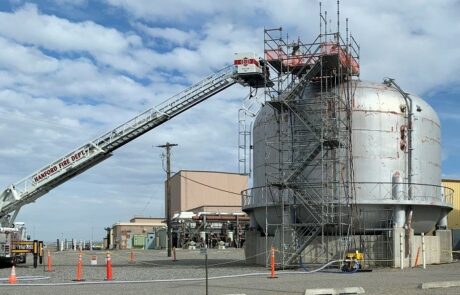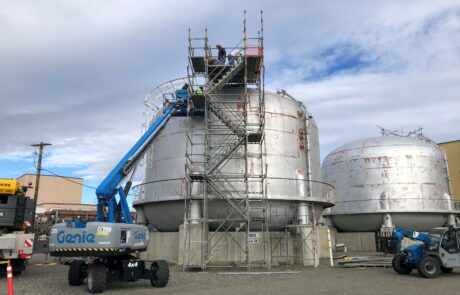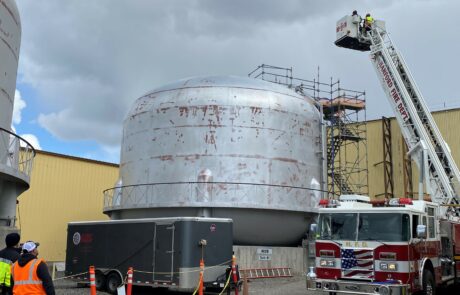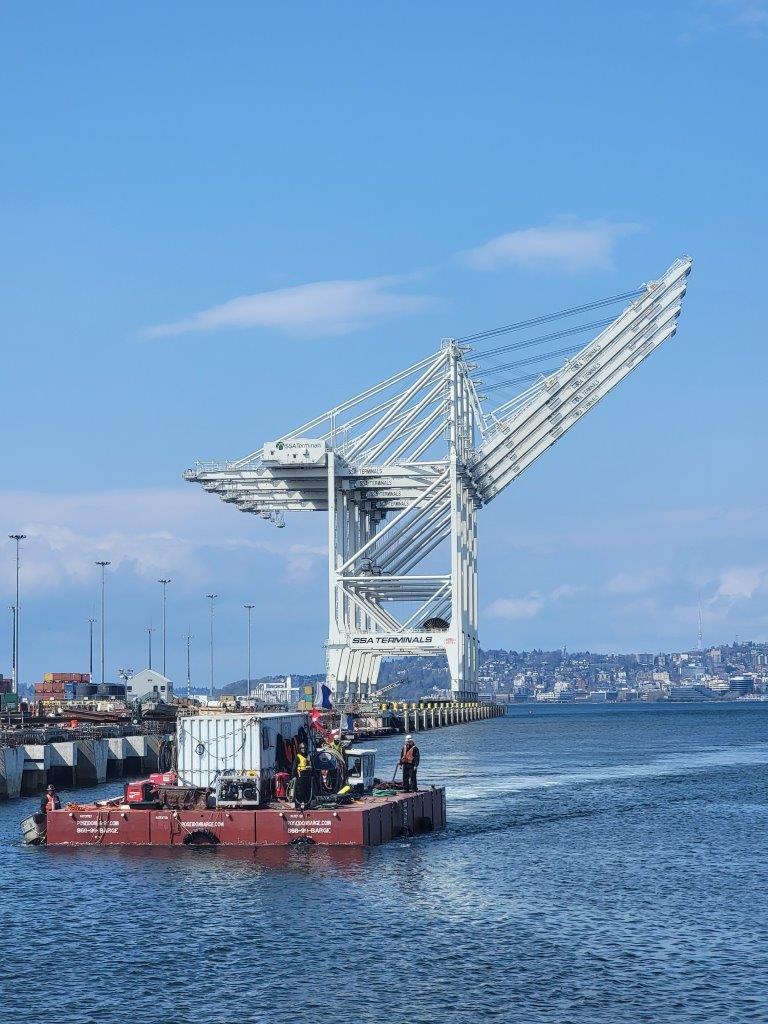
Associated Underwater Services. Inc. (AUS) recently inspected and repaired two area 400 tanks at the Hanford Nuclear Power Facility.
RICHLAND, Wash. – EM Richland Operations Office (RL) contractors Central Plateau Cleanup Company (CPCCo) and Hanford Mission Integration Solutions (HMIS) recently teamed up to dive into some inspection and maintenance activities that were anything but routine.
The challenging project involved sending highly-trained divers with specialized equipment into two 300,000-gallon water tanks to inspect conditions, remove sediment and debris, and perform minor repairs.
View this video for sights and sounds from this unique project.
The tanks provide water for a portion of the Hanford Site. The National Fire Protection Association requires the inspections every five years.
Introduction
Associated Underwater Services Inc. performed an underwater inspection and repairs at the 400 Area T-87 and T-58 at the Hanford Nuclear site in Richland Washington from March 16th – March 29th, 2021 for Central Plateau Cleanup Company. The tank inspection and repairs were completed in accordance with the U.S. Coast Guard, Association of Diving Contractors International, Inc. (ADCI)Consensus Standards for Commercial Diving and Underwater Operations (6th Ed.), the U.S. Occupational Safety and Health Administration (OSHA) 29 CFR Part 1910, Subpart T – Commercial Diving Operations (Dir. CPL 02-00-151; 2011), the U.S. Navy Dive Manual, Rev. 7, NFPA 25, section 9.4 and AWWA M42 App. C and AWWA M42 chapter 4 & App. C.
Inspection Methods
A five-man crew used surface supplied dive gear with high pressure air cylinders for the breathing medium. All breathing lines were manifolded to allow for isolation to supply the diver as required. A hardwire communication system provided communication between the divers and the dive station. All operations included diver helmet mounted camera and light allowing topside monitoring of the video and audio signal. Divers wore dry suits for thermal protection. All diving equipment was staged adjacent to the tanks. Divers entered and exited the water via a ladder. The dive crew accessed the top of the tank via scaffolding and stairs provided by CPCCo. All tools, materials, and personnel that entered the tanks were sprayed and cleaned with an approved disinfecting solution. The crews set up on T-58 first, performing all operations to completion before transferring to T-87.










